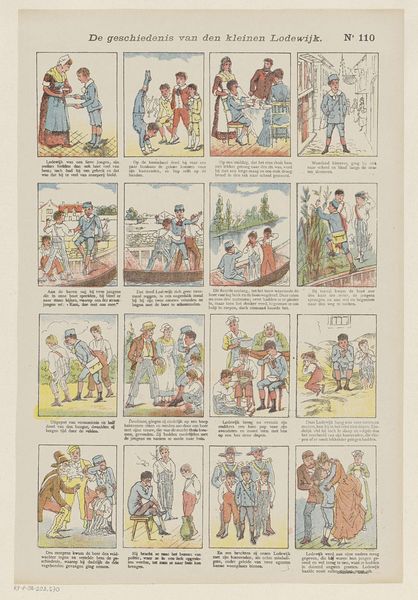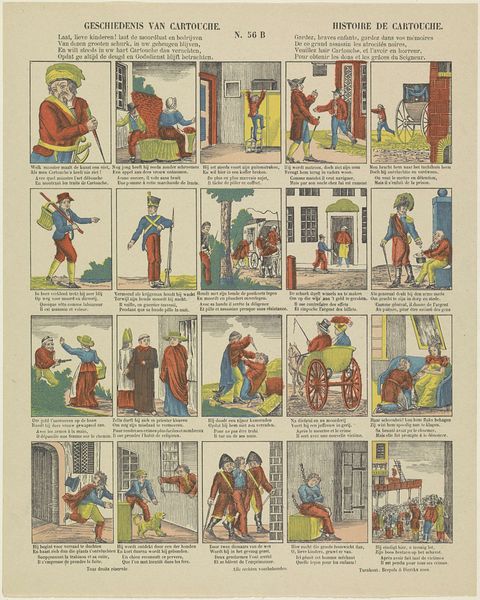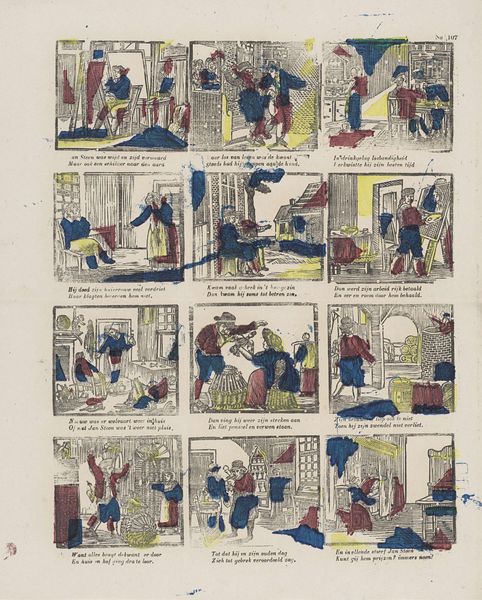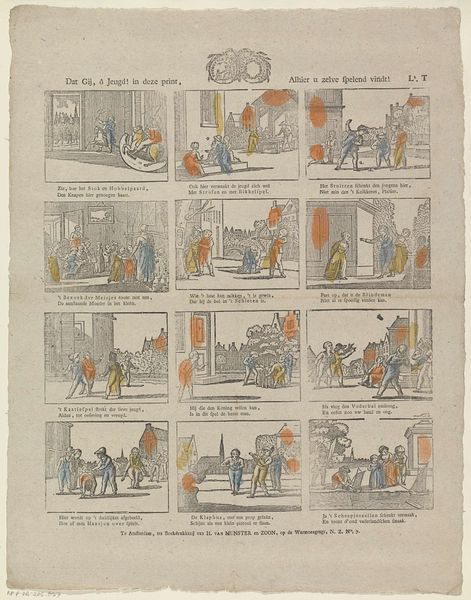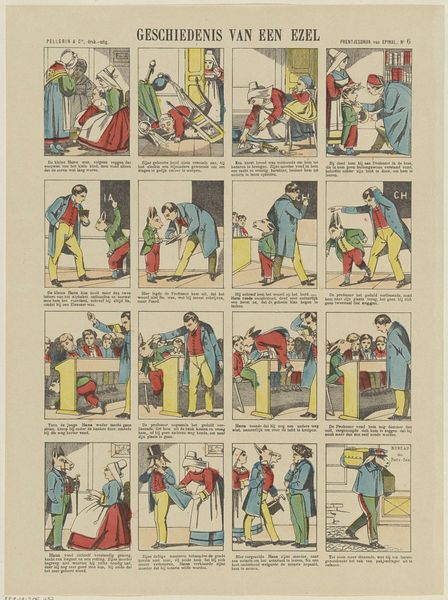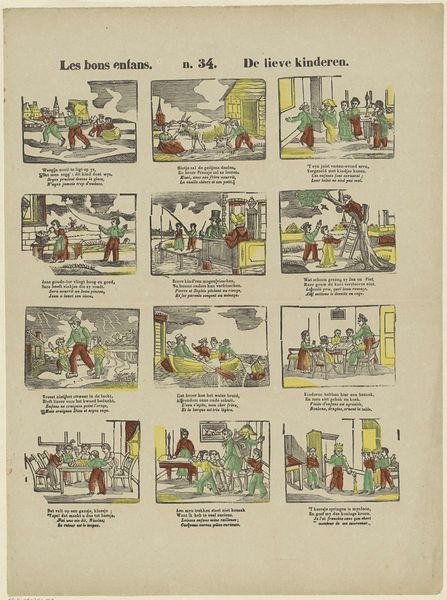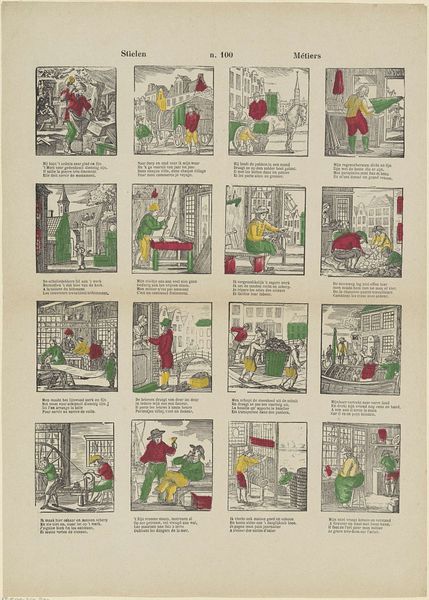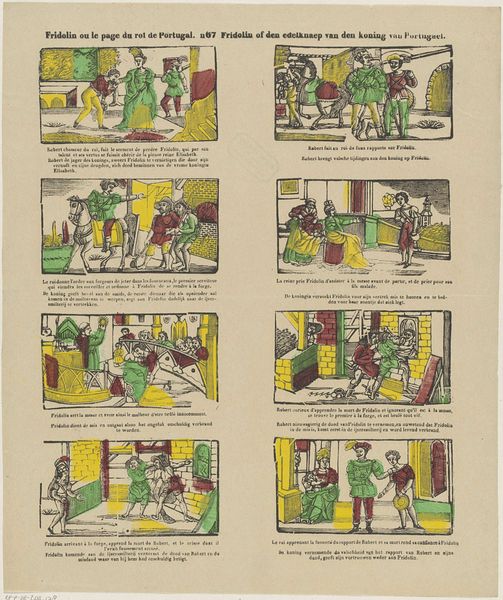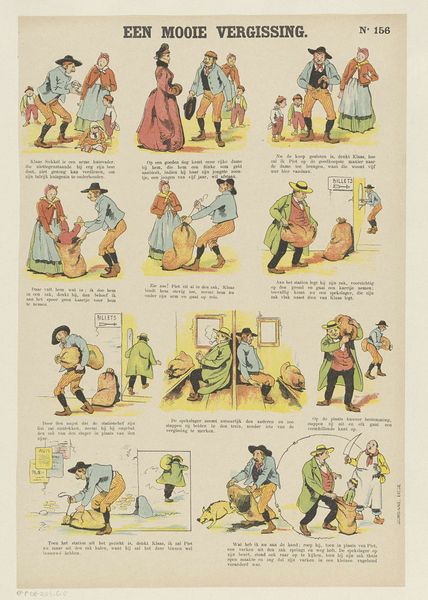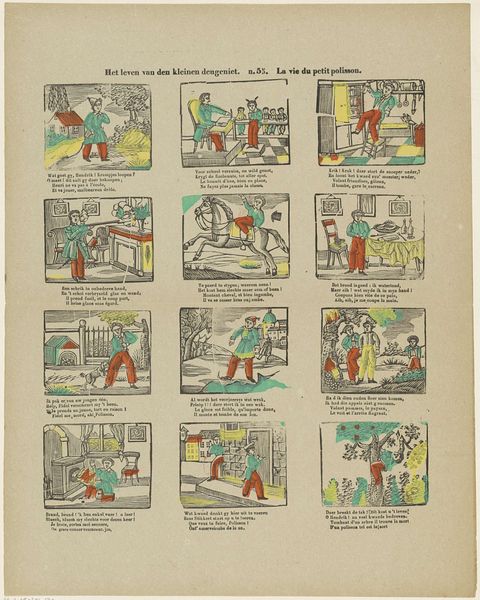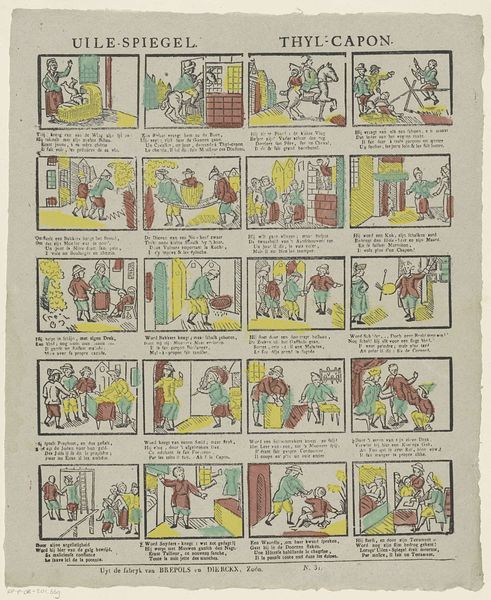
#
narrative-art
#
comic strip
#
comic
#
genre-painting
Dimensions: height 400 mm, width 269 mm
Copyright: Rijks Museum: Open Domain
Curator: This vibrant sheet is called "In den Kelder," created between 1894 and 1959 by Monogrammist G.J. It presents as a series of small scenes. What strikes you immediately about this artwork? Editor: The narrative! It feels like an old-fashioned comic strip. The red uniforms of the soldiers really stand out against the muted background, giving it a slightly unsettling feeling. There's definitely a story unfolding here, visually rich and quite complex. Curator: Let’s consider the construction of the sheet. It’s clearly a printed work, likely produced in multiple iterations. The individual frames and the way the text is integrated suggest a potentially mass-produced format. We can examine the materials, the printing process and even consider its probable method of distribution as evidence for cultural and social patterns from this period. Editor: Looking closer at the symbolism, Catherine is a recurrent figure in these frames. She appears to be outsmarting the soldiers in many instances, perhaps indicating the power of wit and cunning against brute force. In one striking panel, she even appears to summon smoke from a fire with a wave of her hands! Curator: The fire can definitely be related to process of production. The materials used for clothing and equipment and how accessible they may or may not have been speaks volumes about social class at that moment. There's evidence of division of labor in each frame! Editor: Beyond her material circumstances, there’s also an idea of the witch hunt reflected here, as someone trying to create a fog to disappear the soldiers! We need to focus our gaze on the emotional effect it may have for our visitors. I am not convinced by a production based discourse! Curator: Yet, looking from a production perspective it would offer new interpretations and the recognition of an economic and historic value to this piece of art. The format reminds me a modern day newspaper's printing procedure, how fascinating! Editor: Yes, the newspaper frame might be valid...well, regardless the chosen interpretive lens, its clear we've opened the door to the layers of meaning embedded within these images. It offers a blend of historical storytelling and symbolic visual rhetoric. Curator: Absolutely! By examining its creation, we can see a wide historical process being brought into the work and offer insightful materialist-centered readings.
Comments
No comments
Be the first to comment and join the conversation on the ultimate creative platform.

